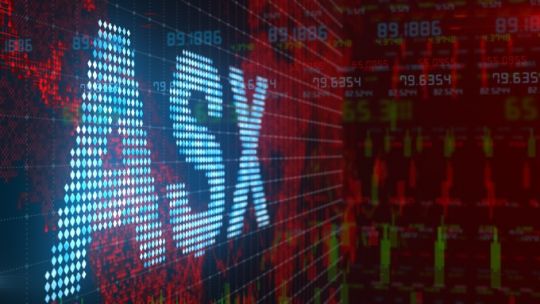10 Biggest Companies on the ASX in July 2022

There are more than 2,000 companies listed on the ASX, and while we would like to examine them all we just wouldn’t have the time. So, we spoke with the Wealth Within to get their take on how the ASX’s 10 biggest players have performed recently.
Here is what we learned about the 10 biggest ASX companies by market capitalisation:
Australian and New Zealand Banking Group Ltd (ANZ)
It’s no secret that the RBA expects inflation to hit 7% by the years’ end and their current plan to combat inflation is to raise the cash rate to 2.5%. Whether we agree with their current plan is not important, what is important is how the change in the cash rate will affect our banks.
We believe the change in the cash rate will ultimately support bank share prices, but at the same time it is very damaging to consumer confidence. ANZ’s consumer confidence survey indicates that consumer sentiment has fallen markedly to levels seen back in 2020 during the height of the COVID pandemic, and the public perception of the changing conditions needs to be managed very carefully by the banks.
ANZ shares fell by 12.6% in June 2022 and the move down took many investors by surprise as the share price had risen slightly in late April before falling around 11% by the end of May. On review, the successive rises in the cash rate have resulted in the selling accelerating on two occasions in both May and in June. ANZ fell 22%in the financial year, continuing the pain experienced by investors who have been suffering from a decline in bank shares for several years. Although our current forecast indicates there is a short-term risk of a fall to around $20, there is a chance that ANZ’s share price will be trading higher by the year’s end.
BHP Group Ltd (BHP)
BHP completed the merger of its oil and gas portfolio with Woodside Energy Group Limited (WDS.ASX) on July 1, 2022. Investors may have been hoping this would be followed by a reduction in the volatility of BHP’s share price as oil prices continue to exhibit high levels of volatility? However, this would be a false assumption as iron prices are just as volatile as oil. It is worth mentioning how initially following the change in BHP’s capital there was a delay in the adjustment of BHP’s historical price data by some providers. This gave the impression on the chart that BHP had fallen away, when the opposite was true. A much more significant influence on the downward direction of resources has been the global conflict and the current policy being adopted by the RBA on monetary policy, which is raising fears about a potential recession.
BHP Group fell by around 7.3% in June, and for the financial year 2022 its share price fell approximately 4.9%. If you have a long-term view, BHP has significant upside potential, however, in the more immediate future the stock price is at risk of a decline to between $28 and $32. As it falls investors will struggle to understand why BHP is trading below its highest price prior to the Global Financial Crisis (GFC) and we can’t blame them.
Commonwealth Bank of Australia (CBA)
Commentary released by the major banks has become increasingly negative, particularly in the lead up to the rate hikes, we can only think that the banks are hoping to influence the RBA’s position. Remember banks stand to benefit most from a higher cash rate and the difference they make from borrowers and pay out to depositors. Borrowers will adjust to higher mortgage rates. The RBA website shows that prior to the GFC when stock prices reached extremes, the cash rate was hovering at around 6% and mortgage rates are typically a percent or two higher.
CBA’s share price fell by around 14% in June. In the sell-off CBA traded below a very strong support level at around $92.40. For the financial year to 30 June 2022, CBA’s share price lost 9.5%. Although CBA is tightly held by many Australian investors that does not make it immune from a sell-off. And while CBA may find support for a further rise, as long as it continues to trade above $90, an assessment of the downside risk indicates the potential for the stock price to decline to between $82 and $84.
CSL Limited (CSL)
CSL’s price chart has dramatically changed since the COVID pandemic began. The historical trajectory of CSL’s share price was strongly up for over a decade with very little downside as it rose to its all-time high of $342.75 in February 2020, and investors enjoyed the rise. CSL is currently down by around 16% from its all-time high and in June the stock fell 1.5% to $269.06.
Up until recently, CSL has struggled to find direction and although a nice rise this week has presented a short-term opportunity significant resistance exists between $300 and $320. The previously mentioned levels are prohibitive for a medium to longer term trade, as CSL may peak in this range. The longer CSL’s share price trades below $320, the greater the uncertainty around the medium to longer term direction for its share price.
Fortescue Metals Group Ltd (FMG)
Volatility in the iron ore price continues to raise havoc in the share prices of Australia’s iron ore miners. While the media reported on the trail Fortescue has blazed into renewable energy, the stock appeared immune from the volatility for some time. However, iron ore inventories have risen amidst Chinese lockdowns, and this has resulted in swift falls in the price of this commodity.
Although as expected FMG’s share price did trade back up to an important range between $21 and $22 in recent months it fell away swiftly from this range in June 2022, which changes the outlook to the more bearish view. The current risk is strongly to the downside, with the potential for FMG to continue to fall to its low of $13.90 in November 2021. If the share price does not recover in the coming weeks this increases the potential for a further decline. FMG fell by around 13% in June and for the financial year ended down around 26%, and this fall has continued in recent weeks
Macquarie Group Limited (MQG)
MQG fell by around 12% to close at $164.24 in June and gained 4.8%in the financial year. What these numbers hide is the level of volatility in the share price over the past year, with half the year bullish and the other half bearish.
MQG traded up to an all-time high of $217.32 on January 5, 2022 at which point it commenced falling to a low of $157.03 in June, representing a fall of around 28% from its all-time high before finding buyer support recently. This is where it is important for investors to understand that even the biggest shares can experience extreme volatility and this is not a first for MQG as it fell 85% in the GFC while other big banks fell in the order of 61 to 66%.
If we compare recent declines, we find that the recent fall in MQG’s share price is comparable to three of the big four banks, CBA the exception falling much less. In the current climate a good financial result will be rewarded as the market is looking for the standout stocks. Macquarie has its annual general meeting on July 28. Irrespective of upcoming reports MQG is unlikely to present a solid entry to buy in July. We will continue to watch with interest in the months that follow.
National Australia Bank Limited (NAB)
Last month, NAB completed the acquisition of Citigroup’s Australian consumer business. CEO Ross McEwan said, “the acquisition supports their decision to build a leading personal bank with a simpler more digital experience.”
The RBA’s decision to raise the cash rate is bad news for borrowers who will face correspondingly higher monthly loan repayments.
Related article: The Big Four Banks pass on RBA rate hike in full – how could it affect your repayments?
Although currently the market is bearish on banks, we expect this view will change, provided the RBA does not raise the cash rate beyond a psychological tipping point that sees consumer confidence eroded to the point where the subsequent recovery is impeded. We suggest that investors wait for the dust to settle on recent interest adjustments and for bank share prices to bottom and confirm that the big money is flowing back into these shares.
For the month of June, NAB lost 13% and in the financial year 2022 the share price gained 4%. Prior to the current correction, NAB and CBA were the best performing banks of the big four. Recently the stock has been sold off by around 24.6% from the high of $33.75 in April to the low of $25.43.
Westpac Banking Corporation (WBC)
Recently, WBC has become the worst performing bank. NAB held this mantle for a very long time, as it had a reputation for lackluster capital growth over the past twenty years. When you inspect a price chart the WBC stock price it has traded sideways over the long term. But since the Royal Commission WBC has formed a similar long-term pattern and is trading at levels achieved back in 2005.
Just as your favourite football team may not hold top spot on the ladder for long, your favourite banks may also slip down the ladder at some point. But do they deserve your loyalty? You are less likely to trade your football team for another, but should you switch your preferred bank if it is not performing. Most definitely, though in saying that it is important to take each bank on their merits at the time you make your investing decisions.
For the month of June 2022, WBC fell by around 19% to $19.50. Sadly, for shareholders, WBC lost around 25% in the last financial year. Currently the chart indicates that WBC’s share price may have found sufficient support to rise from here, however, the risk of a further decline increases the longer the share price trades below $20.
Wesfarmers Limited (WES)
Back in April, WES appeared to have bottomed and we suggested investors wait. While there was the potential for the WES share price to start trading back up, the stock was trading at a very important level at around $48.50. If it were to fall below this strongly the analysis indicated a further fall to was probable to between $42 and $43. WES did fall and is currently trading within this range.
The sell-off had such strong momentum behind it that momentarily the price fell to $40 before rising to where strong buyer support now exists. Falls are not great for those who buy and hold but active investors will be rubbing hands together while waiting for confirmation that the trend is likely to turn back up.
Currently it is still too early to confirm the low. It may be August before we can provide a clearer picture. The stock fell 11.9% in June 2022 and for the financial year WES lost around 29%! Proving that even the best stocks on our market should be actively managed.
Woolworths Group Limited (WOW)
WOW gained a respectable 2% in June 2022, and interestingly, the yearly performance to 30 June was flat. Why is this interesting? From 1, July 2021 to August 20, 2021 WOW rose by 11%. This is a strong rise, made more significant by the timing in that it rose over one and a half months before proceeding to fall over ten months and by 23.5% to $32.62, so any investor excitement was short lived.
When it comes to the stock market Isaac Newton’s theory proves correct. What goes up can come down. But good stocks do not stay down forever, and WOW recently commenced a rise to recover around 50% of the prior fall but is this sustainable?
One thing is certain, the recent rise does not signal an entry. The chart indicates that WOW must jump a number of hurdles to justify the risk and $40 has previously provided resistance, therefore a solid technical entry above this level would reduce risk and increase the potential likelihood that Newton’s theory doesn’t play out immediately after the rise.
Cover image source: Immersion Imagery (Shutterstock.com)
This article was reviewed by our Content Producer Marissa Hayden before it was updated, as part of our fact-checking process.

- Australian and New Zealand Banking Group Ltd (ANZ)
- BHP Group Ltd (BHP)
- Commonwealth Bank of Australia (CBA)
- CSL Limited (CSL)
- Fortescue Metals Group Ltd (FMG)
- Macquarie Group Limited (MQG)
- National Australia Bank Limited (NAB)
- Westpac Banking Corporation (WBC)
- Wesfarmers Limited (WES)
- Woolworths Group Limited (WOW)
Try our Investor Hub comparison tool to instantly compare Canstar expert rated options.





